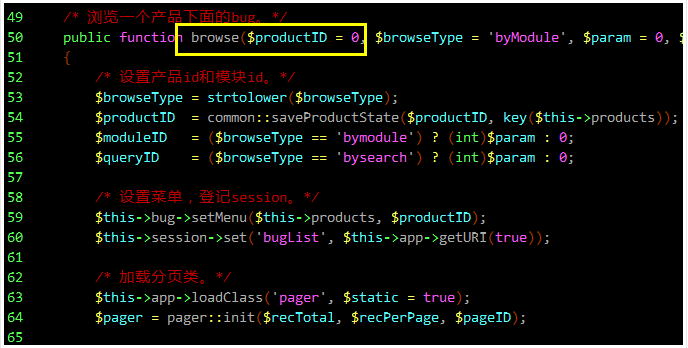- 1 Introduction
- 1.1 About ZenTao
- 1.2 How to get support
- 2 How to Install ZenTao
- 2.1 Choose the best installation
- 2.2 ZenTao Cloud
- 2.3 One-click Installation Package for Windows (Recommended)
- 2.4 One-click Installation Package for Linux
- 2.5 Source Code Installation Package (for all Systems)
- 2.6 Set up Virtualbox for ZenTao
- 2.7 Softaculous service
- 3 Upgrade ZenTao
- 3.1 Choose Upgrade
- 3.2 Upgrade by source codes (General for all systems)
- 3.3 Upgrade for one-click installation package for windows users (xampp)
- 3.4 Upgrade for one-click installation package for Linux
- 4 Users and Groups
- 5 Simple Application
- 6 Basic Application
- 6.1 Basic Workflow
- 6.2 Agile and Scrum
- 6.3 ZenTao and Scrum
- 6.4 ZenTao Tutorial for Rookies
- 6.5 Create a Product
- 6.6 Create a Story
- 6.7 Create a Project
- 6.8 Confirm Stories
- 6.9 Decompose Tasks
- 6.10 Report a Bug
- 6.11 Manage Contacts
- 6.12 Customization
- 7 Advanced Application
- 7.1 Workflow
- 7.1.1 ZenTao Workflow
- 7.2 Personal management
- 7.2.1 My To-dos
- 7.2.2 My Task, Story and Bug
- 7.2.3 My Profile
- 7.3 Product Manager
- 7.3.1 Manage a Product
- 7.3.2 Create and Review a Story
- 7.3.3 Change and Review a Story
- 7.3.4 Story Status
- 7.3.5 Notes for Writing a Story
- 7.3.6 Product Module
- 7.3.7 Release Plan
- 7.3.8 Create a Release
- 7.3.9 Roadmap
- 7.3.10 Manage Documents
- 7.3.11 Product Meetings
- 7.3.12 Project Management, Presentation and Summary
- 7.3.13 Story Reports
- 7.4 Project Manager
- 7.5 Development Team
- 7.5.1 Project planning meeting and decompose tasks
- 7.5.2 Claim and update Tasks
- 7.5.3 Create a Build
- 7.5.4 Test Task
- 7.5.5 Resolve a Bug
- 7.5.6 Manage Documents
- 7.5.7 Confirm Bugs
- 7.6 Testing Team
- 7.6.1 Bug Management
- 7.6.2 Submit a Bug
- 7.6.3 Confim and Close a Bug
- 7.6.4 Activate a Bug
- 7.6.5 Find a Bug
- 7.6.6 Test Case
- 7.6.7 Create a Test Case
- 7.6.8 Manage a Test Task
- 7.6.9 Execute Cases and Report Bugs
- 7.6.10 Reports
- 8 Configuration
- 8.1 Maintain ZenTao
- 8.1.1 Initialize scripts
- 8.1.2 Back up ZenTao
- 8.1.3 Recover the deleted
- 8.1.4 Update Burndown charts
- 8.2 Deploy ZenTao
- 8.2.1 Guest Login
- 8.2.2 Cnfigure Email
- 8.2.3 Set Super Admin
- 8.2.4 Configure Static Access
- 8.2.5 Delete "zentao" from your address
- 8.2.6 Integrate ZenTao with SVN
- 8.2.7 Integrate ZenTao with Git
- 9 Custom Development
- 9.1 ZenTao Mechanism of Developing
- 9.2 ZenTao Directory
- 9.3 Modify files
- 9.4 ZenTao Database
- 9.5 Common Modules
- 9.6 Add features to navigation bar
- 9.7 Examples: Modify Language Prompt
- 9.8 Examples: set priority when creating bugs
- 9.9 Web Editor
- 9.10 Packaging Standards of ZenTao 1.1
- 10 Other Relevant Issues
- 10.1 About third-party code
- 10.2 ZenTao FAQ
- 10.3 How to Help ZenTao
- 10.4 ZenTao Business Service
- 10.5 Acknowledgement
Modify files
- 2015-09-14 15:05:28
- azalea
- 10464
- Last edited by xiying guan on 2018-12-06 10:10:34
If you want to modify ZenTao, you should where the corresponding codes are. Now you have an understanding of ZenTao’s directory structure, so let’s look ar how ZenTao requests can be corresponded to the codes.
$this->lang->bug->xxx: its definition is in module/bug/lang/zh-cn.php and the zh-cn is determined by the operating language of the current user.
$this->display() calls the template file which has the same name as the current method in the directory of View. For example, the corresponding template file to view bugs is module/bug/view/browse.html.php.
1. Locate the method of control
The control method is an entry to on each page. Let’s look at an example bug-browse-1.html or /?m=bug&f=browse&productID=1&t=html. bug-browse-1.html is the browsing method to visit the bug module; 1 is the first parameter and html is the type to access to the page. Similarly, /?m=bug&f=browse&productID=1&t=html,"m" means the name of the module," f" the name of the method and the following is the parameter list. Then you can find the source code in ZenTao -browsing method in module/bug/control.php.

2. Calling control
Now that we have know where the the entry function is, let’s look at what is in it.$this->bug means calling model in the bug module. The corresponding file is module/bug/model.php.
this->loadmoel ('tree')->xxx means loading model of the tree and its corresponding file is in module/tree/model.php..
$this->app->loadClass('pager') means loading a lib and its corresponding file is in lib/pager/pager.class.php.$this->lang->bug->xxx: its definition is in module/bug/lang/zh-cn.php and the zh-cn is determined by the operating language of the current user.
$this->display() calls the template file which has the same name as the current method in the directory of View. For example, the corresponding template file to view bugs is module/bug/view/browse.html.php.
Write a Comment
